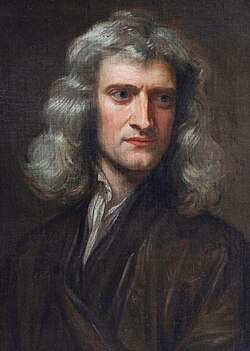FHSST Physics/Newtonian Gravitation
Appearance
Newtonian Gravitation
[edit | edit source]
All objects on Earth are pulled downward, towards the ground. This phenomenon is called gravity. Every object falls just as fast as any other object (unless the air slows it down like a feather, or pushes it up like a balloon), as first shown by Galileo. In 1687 Isaac Newton stated that gravity is not restricted to the Earth, but instead, there is gravity everywhere in the universe. Newton explained that planets, moons, and comets move in orbits because of the effect of gravity.
